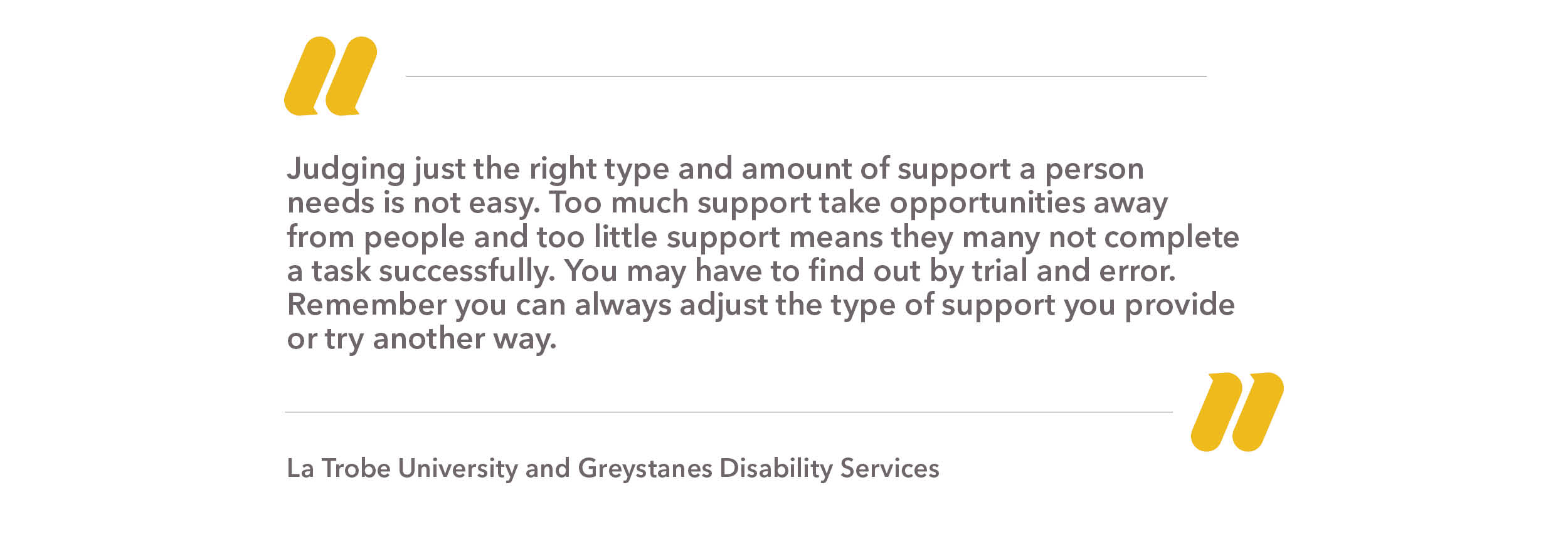Call us 1800 243 232
Call us 1800 243 232
In this session we will cover:
This module will take around 30 minutes to complete. At the end, you will be required to complete a short, comprehensive quiz.
Graded Assistance is giving just the right amount and right type of support to enable a person to succeed.
Take a moment to watch this video by La Trobe University and Greystanes Disability Services that explains how Graded Assistance is used.
When using Graded Assistance, we understand that:
Take a moment to watch the video and see what examples of Graded Assistance you can spot.

|
|